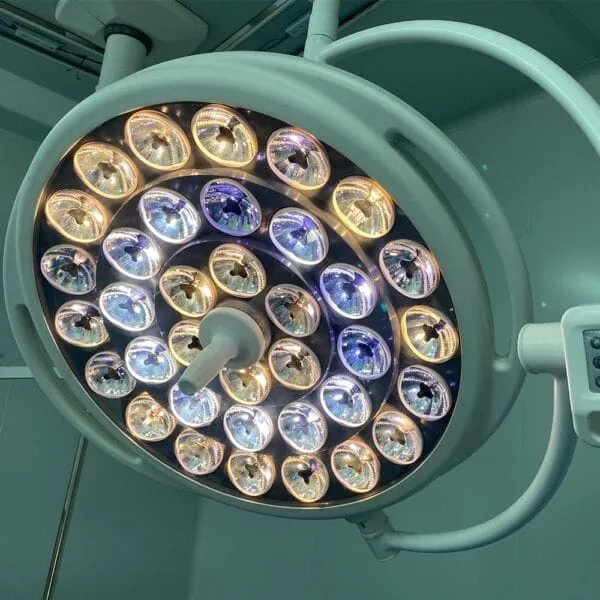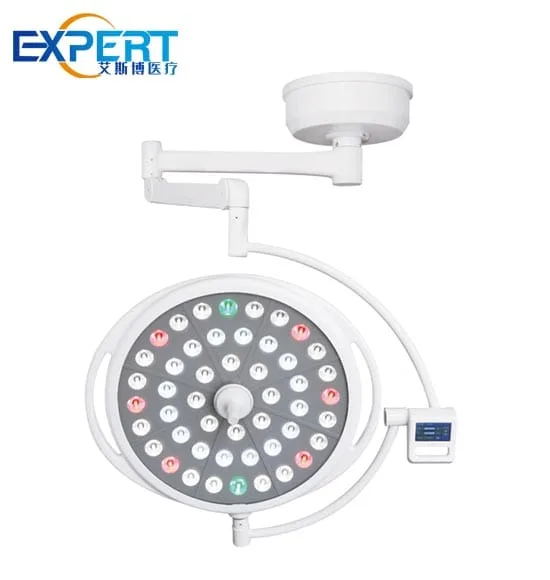Address
304 North Cardinal St.
Dorchester Center, MA 02124
Work Hours
Monday to Friday: 7AM - 7PM
Weekend: 10AM - 5PM
Address
304 North Cardinal St.
Dorchester Center, MA 02124
Work Hours
Monday to Friday: 7AM - 7PM
Weekend: 10AM - 5PM

This blog explores the importance of advanced medical lighting, its features, benefits, and how it transforms healthcare delivery.
Welcome to My Blog!
Before we dive into the content, I’d love for you to join me on my social media platforms where I share more insights, engage with the community, and post updates. Here’s how you can connect with me:
Facebook:https://www.facebook.com/profile.php?id=100071234835011
LinkedIn:https://www.linkedin.com/company/74943205/admin/dashboard/
YouTube:www.youtube.com/@shandongexpertmedicalequip4695
TikTok:www.tiktok.com/@expertmedical
Now, let’s get started on our journey together. I hope you find the content here insightful, engaging, and valuable.

In the fast-paced world of healthcare, precision and clarity are paramount, especially in surgical environments. Medical lighting plays a critical role in ensuring that surgeons and medical professionals can perform procedures with the utmost accuracy. Adjustable and accurate surgical lights are designed to meet the demanding needs of operating rooms, offering flexibility, brightness, and color accuracy to support complex medical tasks. This blog explores the importance of advanced medical lighting, its features, benefits, and how it transforms healthcare delivery. From operating theaters to examination rooms, the right lighting solution enhances visibility and improves patient outcomes.
The significance of medical lighting cannot be overstated in modern healthcare settings. Surgical procedures require a high level of precision, and inadequate lighting can lead to errors, fatigue, and compromised patient safety. High-quality medical lighting provides consistent illumination, reduces shadows, and allows medical professionals to distinguish between tissues with clarity. These lights are engineered to adapt to various procedures, ensuring that every movement is supported by optimal visibility. By investing in reliable lighting systems, hospitals and clinics can elevate their standard of care and create safer environments for both patients and staff.
Adjustable medical lighting is a cornerstone of modern surgical suites. Surgeons often need to modify the intensity, angle, or focus of light during procedures to accommodate different stages of an operation. Adjustable surgical lights offer flexibility, allowing professionals to direct light precisely where it’s needed without repositioning equipment. This adaptability reduces disruptions and maintains a sterile environment, as adjustments can often be made via hands-free controls or intuitive interfaces. The ability to customize lighting enhances procedural efficiency and supports better outcomes.
Accuracy in medical lighting refers to the ability of a light source to render colors naturally and provide consistent illumination. In surgery, accurate lighting is essential for identifying tissues, blood vessels, and other anatomical structures. Lights with high color rendering indices (CRI) ensure that colors appear true to life, reducing the risk of misidentification during critical procedures. Additionally, accurate lighting minimizes eye strain for surgeons, enabling them to maintain focus during long operations. This precision is a non-negotiable feature in high-stakes medical environments.

Modern medical lighting systems are equipped with a range of features designed to meet the unique demands of healthcare facilities. These include adjustable brightness, shadow reduction technology, and energy-efficient designs. Below are some of the standout features that define cutting-edge surgical lights:
These features collectively contribute to a superior lighting experience, making medical lighting an indispensable tool in healthcare.
The adoption of adjustable surgical lights offers numerous benefits for healthcare providers and patients alike. These lights enhance visibility, improve operational efficiency, and contribute to better clinical outcomes. Key benefits include:
Adjustable medical lighting ensures that surgeons have a clear view of the surgical field, reducing the likelihood of errors. The ability to focus light precisely minimizes distractions and enhances safety during delicate procedures.
Long surgeries can strain the eyes, leading to fatigue and reduced concentration. High-quality medical lighting with accurate color rendering and adjustable settings helps surgeons maintain focus, improving performance and reducing the risk of burnout.
Energy-efficient LED surgical lights lower electricity costs and have longer lifespans compared to traditional lighting systems. This makes them a cost-effective choice for hospitals looking to optimize their budgets without compromising quality.
Clear visibility and precise lighting contribute to successful surgeries, which in turn lead to faster recovery times and better overall patient outcomes. Medical lighting is a critical factor in delivering high-quality care.
To help healthcare facilities make informed decisions, understanding the technical specifications of medical lighting systems is essential. The following table outlines key parameters to consider when evaluating surgical lights:
| Parameter | Description | Typical Range |
|---|---|---|
| Light Intensity | Brightness level, measured in lux | 100,000–160,000 lux |
| Color Rendering Index (CRI) | Ability to render colors accurately | 90–98 |
| Color Temperature | Warmth or coolness of light, measured in Kelvin | 3,500–5,500 K |
| Shadow Dilution | Effectiveness in reducing shadows | Up to 95% |
| Lamp Life | Duration of light source before replacement | 40,000–60,000 hours |
| Adjustability | Range of motion and control options for light positioning | 360° rotation, multi-axis adjustment |
| Power Consumption | Energy usage of the lighting system | 50–150 W |
This table provides a snapshot of what to expect from high-quality medical lighting systems, ensuring facilities can select solutions that align with their needs.

Selecting the appropriate medical lighting system requires careful consideration of several factors, including the type of procedures performed, room size, and budget constraints. Here are some tips to guide the decision-making process:
Different medical settings have unique lighting requirements. For example, a minor procedure room may need less intense lighting compared to a major operating theater. Evaluate the types of procedures conducted to determine the necessary light intensity and adjustability.
LED-based medical lighting systems are more energy-efficient and have longer lifespans than traditional halogen lights. Choosing energy-efficient options can reduce operational costs and support sustainability goals.
Surgical lights must withstand frequent cleaning and sterilization. Opt for systems with robust designs and minimal maintenance requirements to ensure long-term reliability.
Hands-free controls and intuitive interfaces are critical in sterile environments. Before purchasing, test the system to ensure it is user-friendly and meets the needs of your surgical team.
The integration of medical lighting into modern operating rooms goes beyond simply installing lights. It involves creating a cohesive system that works seamlessly with other technologies, such as imaging devices and surgical navigation systems. Advanced lighting solutions are often designed to integrate with digital platforms, allowing for remote adjustments and data tracking. This connectivity enhances workflow efficiency and ensures that lighting adapts to the dynamic needs of surgical teams. Additionally, modular designs allow facilities to upgrade their lighting systems without overhauling existing infrastructure, making it a future-proof investment.
Medical lighting systems must be compatible with other operating room equipment, such as monitors and robotic surgical systems. Modern lights are designed with streamlined profiles to avoid interference, ensuring a clutter-free environment.
As healthcare technology evolves, so do lighting requirements. Choosing modular and upgradable medical lighting systems allows facilities to stay ahead of the curve without significant additional costs.

While medical lighting offers numerous advantages, implementing these systems can present challenges. Common issues include high initial costs, staff training needs, and compatibility with existing infrastructure. However, these challenges can be addressed with strategic planning:
By addressing these challenges proactively, healthcare facilities can maximize the benefits of their medical lighting investments.
Medical lighting is a vital component of modern healthcare, enabling surgeons to perform with precision and confidence. Adjustable, accurate surgical lights enhance visibility, reduce fatigue, and contribute to better patient outcomes. By investing in advanced lighting systems, healthcare facilities can improve operational efficiency, ensure safety, and deliver high-quality care. Ready to transform your operating room? Contact us today to explore our range of cutting-edge medical lighting solutions and elevate your surgical precision.
What is medical lighting, and why is it important?
Medical lighting refers to specialized lighting systems designed for healthcare settings, particularly surgical environments. It is critical for providing clear visibility, ensuring accurate color rendering, and supporting precision during procedures.
How does adjustable medical lighting improve surgical outcomes?
Adjustable lighting allows surgeons to customize brightness and focus, reducing shadows and enhancing visibility. This leads to greater precision, fewer errors, and better patient outcomes.
What is the lifespan of modern surgical lights?
Most LED-based medical lighting systems have a lifespan of 40,000 to 60,000 hours, significantly longer than traditional halogen lights.